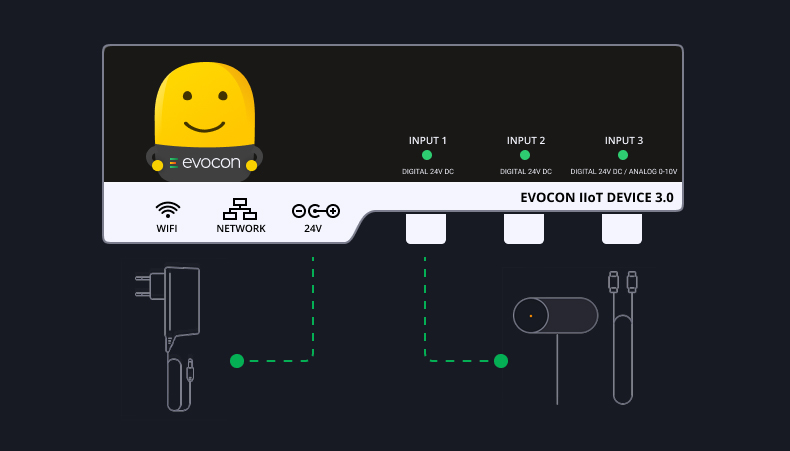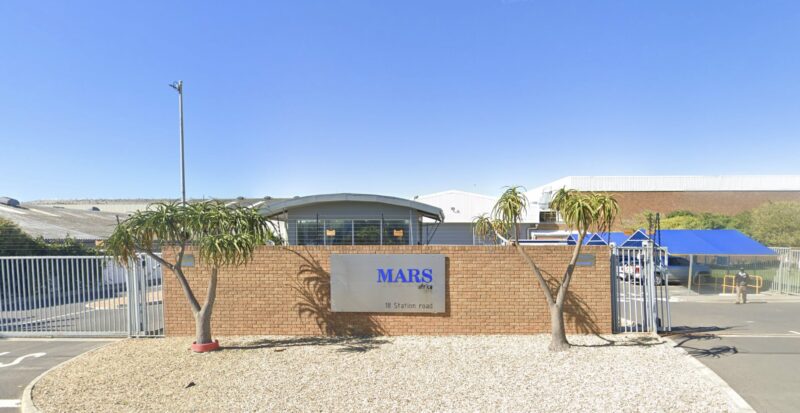If you need to measure the weight of products, we can do it indirectly. For example, by counting batches or measuring machine working time and then converting the result into weight. This article gives you an overview of how to do this with Evocon.
Measuring the Weight of Products in Evocon
Counting and converting
To measure the weight of a bulk product, you first separate the continuous flow into batches. Then, you count those batches in the same way as you would count single products. Finally, you convert the number of batches into weight units.
Let’s take bulk fertilizer production as an example. You separate the continuous flow of the fertilizer with hopper scales and pack it into bags. Then, you count the bags using a sensor. The system “knows” how much each bag weighs (this is configured by you) and multiplies it by the number of bags. The screen displays the information in weight units.
Measuring time and converting
A good example of this case is sand processing. Sand dosing system doses, let’s say, 15 kilograms of sand every 15 minutes. Therefore the most straightforward method is to measure time and convert the result into kilograms. Working time could be taken from a PLC output signal.
What Hardware Do You Need to Measure Weight?
When counting batches of products (for example, bags) and measuring the weight of the products, you need hardware that sends 1 signal per cycle (in other words, 1 signal for each batch registered). When measuring working time, you need hardware that sends a continuous signal when a machine is working and stops sending it when the machine stops working.
Here are the types of hardware capable of this task:
- sensor (the most popular option for counting batches)
- PLC (programmable logic controller, which is essentially a small computer)
- button (sends the signal when pushed manually)
- any other electrical system, connected through a relay
- finally, there is also a hardware-free solution (using HTTPS requests)
Whatever hardware you choose, it creates signals that are registered by the Evocon device. The device sends these signals to our server. Evocon system processes data and displays it. All of this happens instantly, and you see the data displayed in real-time.
Sensor
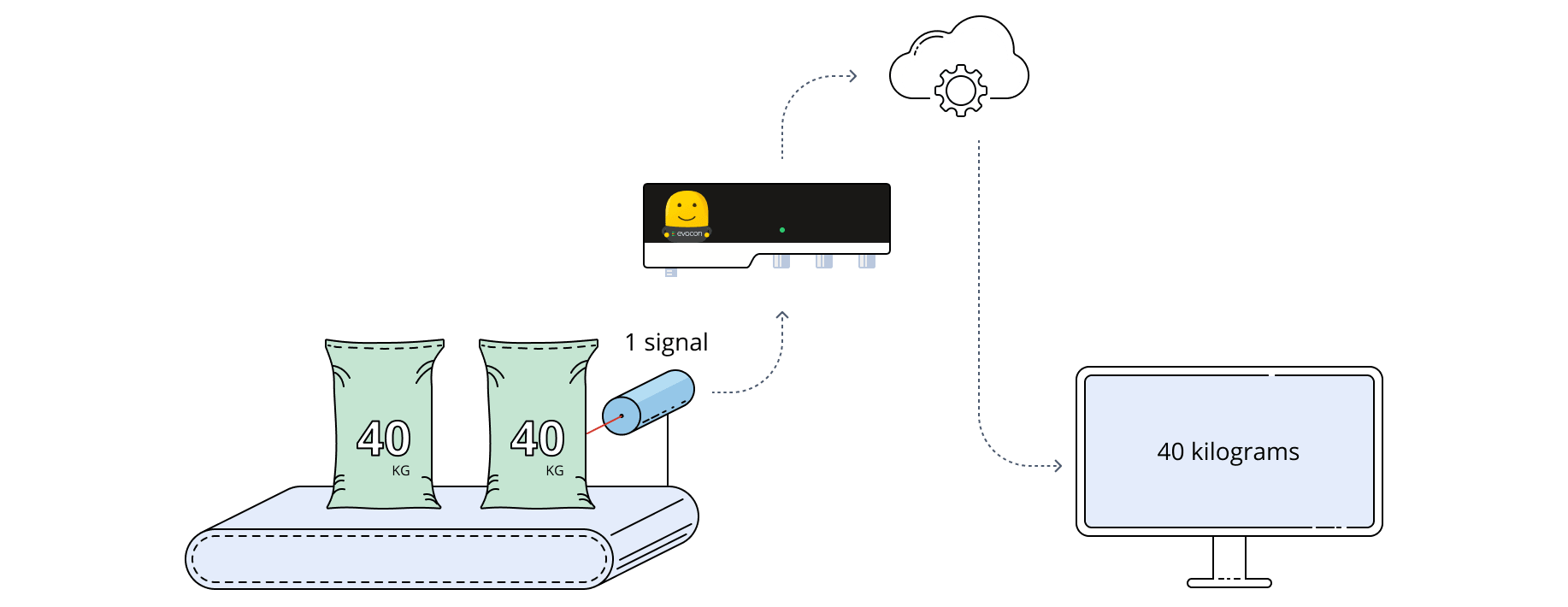
The picture above illustrates counting products using a sensor and converting to weight units.
PLC
PLC is a small computer connected to your equipment directly. Newer automated machines usually have PLCs built into them. If there is a PLC signal available that corresponds to a product made, it is best to choose this method over a sensor.
One advantage of that is that any problems with PLC would be spotted and fixed sooner than if something happens to the machine or a sensor. Also, PLC outputs are generally more stable than sensor outputs.

The picture above illustrates how Evocon uses a PLC installed in an electric cabinet.
Push-button

When an automated solution isn’t possible, you can count products by installing a button which operators pushed manually upon completion of a product. It is not the most reliable method, but it makes sense in situations when products take more time to complete, are fairly complex, large, or custom. Therefore, we discuss the usage of buttons in our article about other types of production.
Which Hardware Is Provided by Evocon?
We provide the Evocon’s IIoT device, together with the power supply. You need to have sensors (or other hardware mentioned above) and cables. If requested, we can supply the sensors and necessary connectors and cables at an additional cost.
Below is a picture illustrating Evocon setup, including connection to the network and display devices. For more information, please read our article about setting up Evocon.

Easy-to-setup OEE Software
Track and analyze production across all your shifts, stations, factories, and countries. Free for 30 days.
Converting the Number of Products into Other Units
In the case of counting batches, the last step in the process of measuring the weight is to convert the number of product batches into weight units. In the system, you can specify how much each batch of a product weighs.
The system can store multiple definitions of products and their corresponding weights. When you change from one product to another, different definitions apply. Here is how it works:
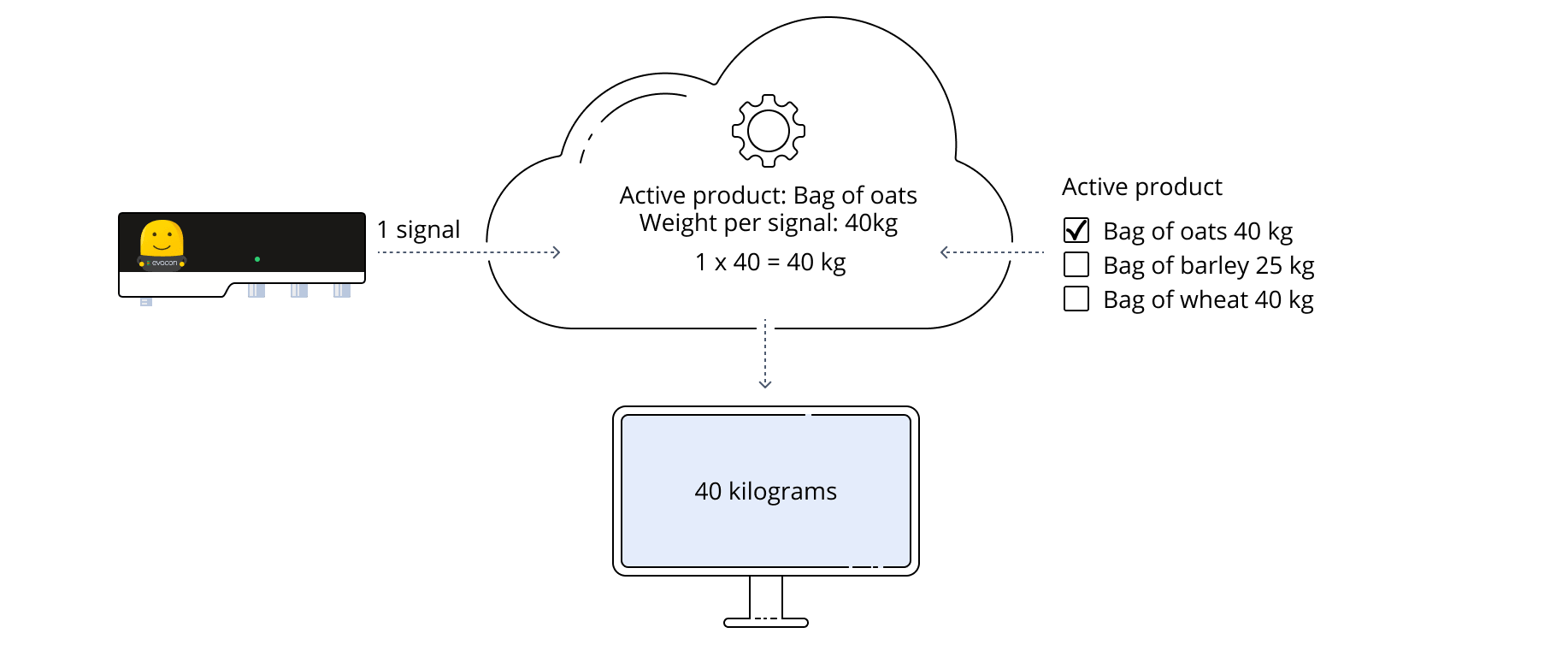
Similarly, it is possible to convert the number of products into a different number, for example, if your sensor registers boxes of products, but you want to see the total number of products in the system.
Using Control Signals to Increase the Reliability of Data
In some situations, it is practical to “verify” the validity of the signal that you use to measure the weight of products by backing it up with a second signal. For example, you may want to make sure that accidental signals, triggered by the sensor during maintenance or cleaning process, do not influence the accuracy of measuring the weight of your products and your OEE data.
This is how the previous example would work:
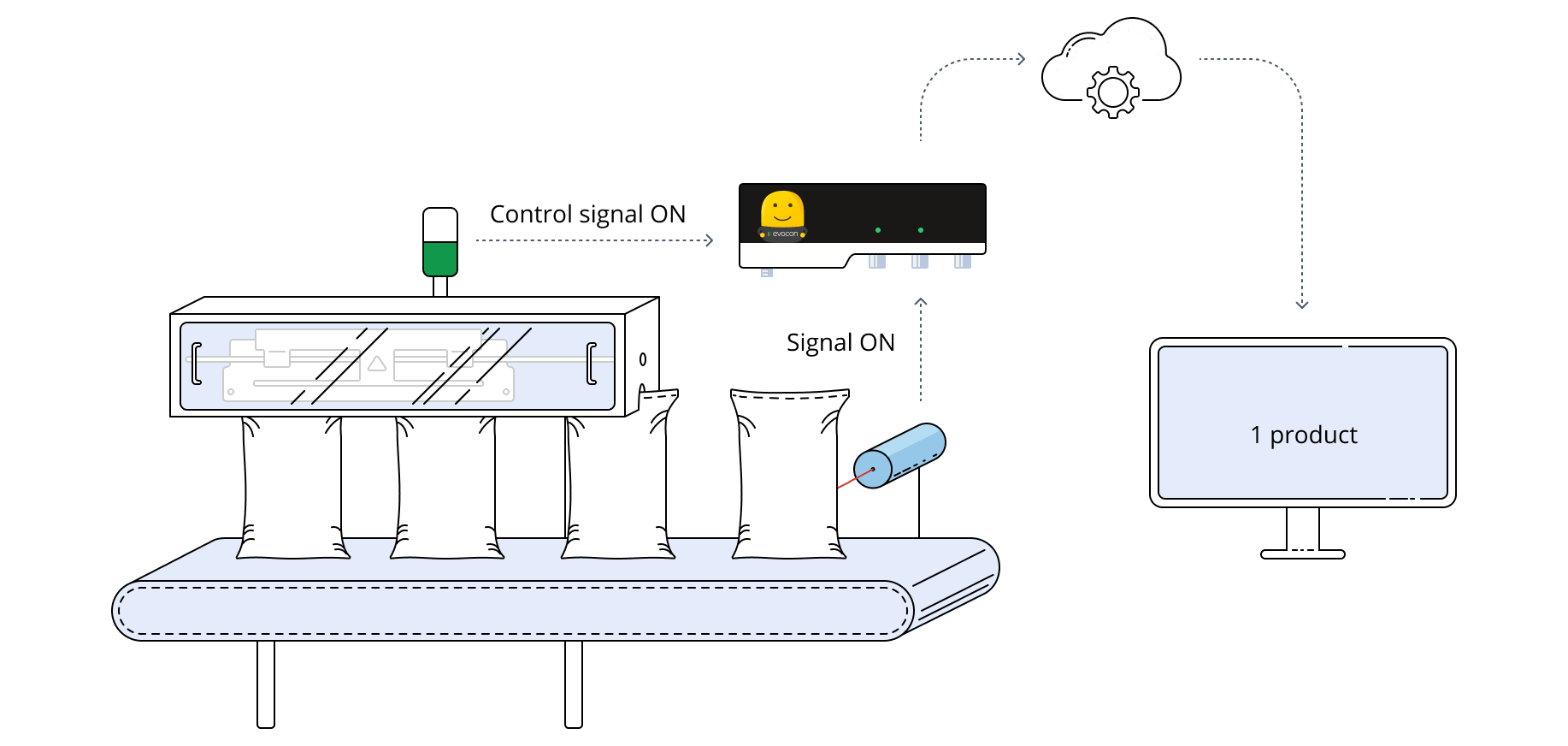
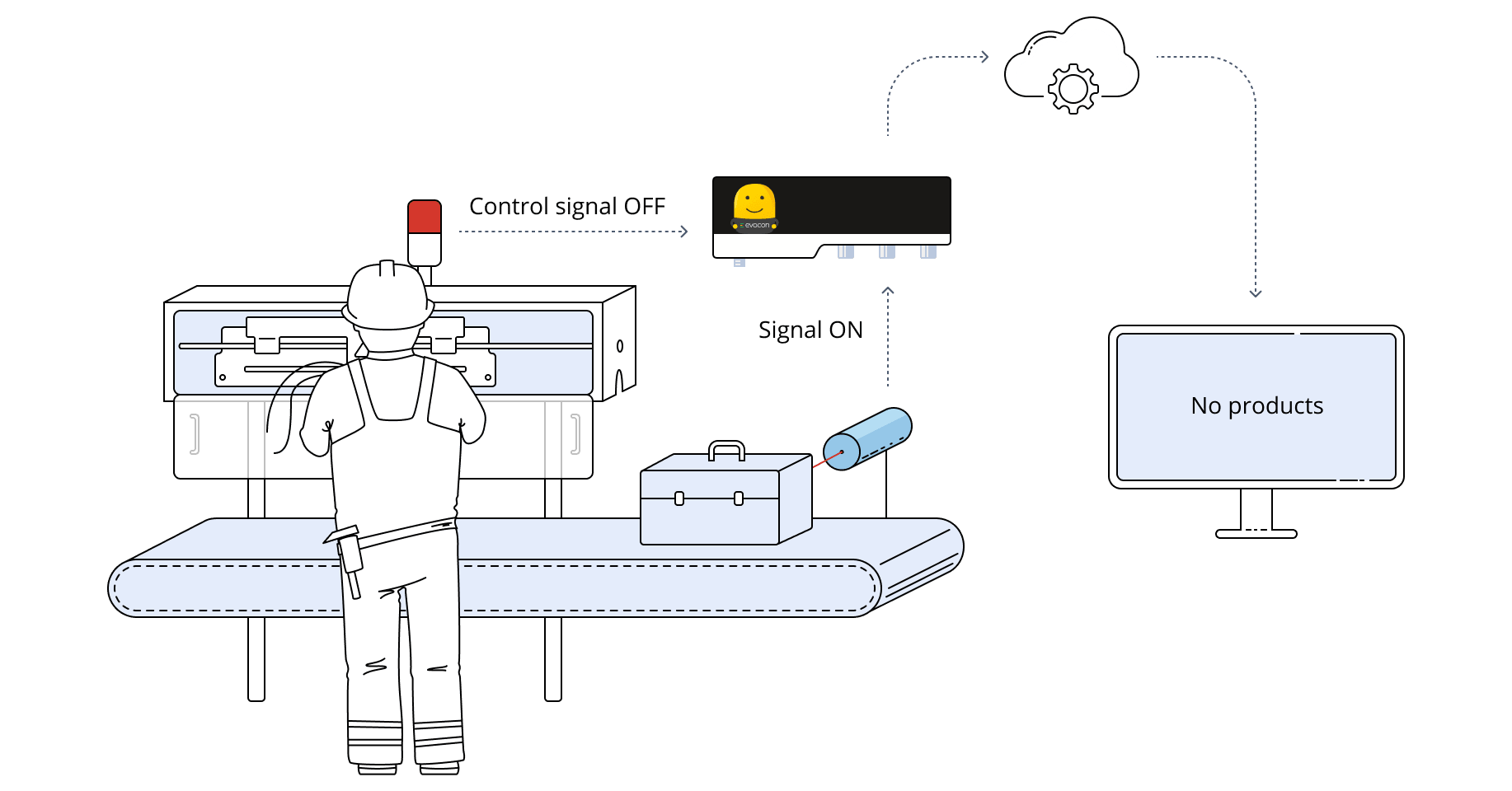
Here you can see that the primary signal comes from the sensor and the secondary signal – from the Andon light. When the Andon light is on, the Evocon device registers sensor signals as usual. When the Andon light is off, it ignores all signals from the sensor.
